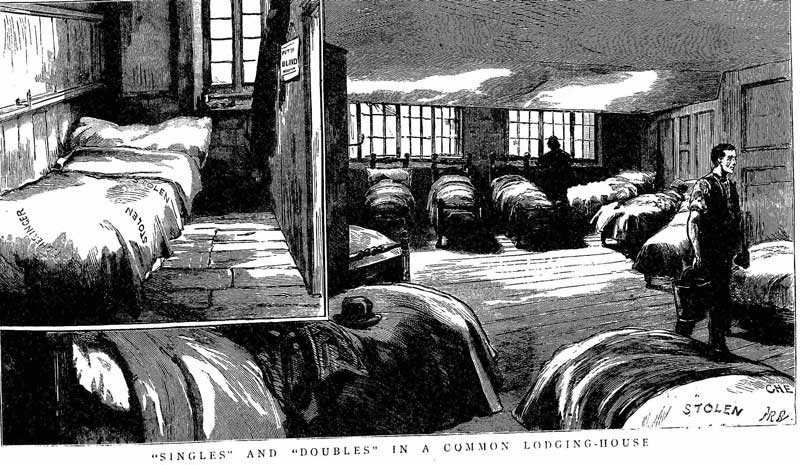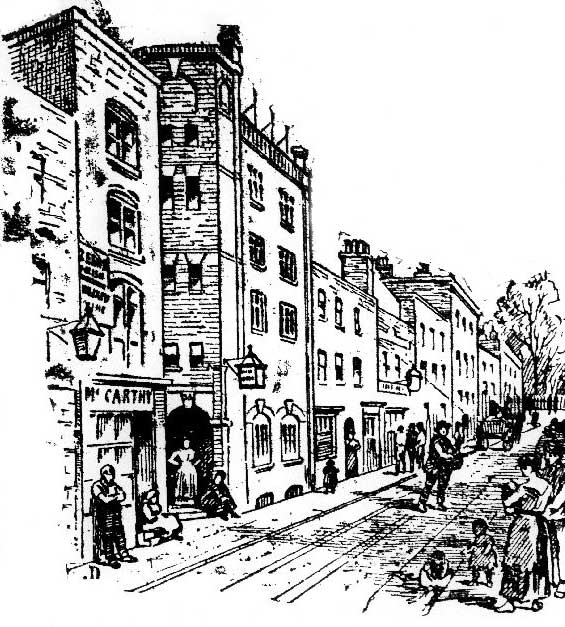Today, I just wanted to take a little time to ponder what exactly it is that interests people about the 1888 Jack the Ripper murders, and to wonder what an interest – even obsession – in the case actually says about those of us who are drawn to it.
A STRANGE INTEREST
If you think about it, interest in the Jack the Ripper case – or the Whitechapel Murders to use the official name for the atrocities – is a strange pursuit.
Nothing about the details of the case is particularly pleasant or, for that matter, particularly fascinating.
It is simply the story of an unknown miscreant who carried out a series of brutal murders in a part of London that had a reputation for being one of the most poverty-stricken and crime-infested quarters of the 19th-century Metropolis.
TRAGIC VICTIMS
The victims were women who, as a result of their chronic alcoholism – brought on by the blows that had been dealt them by both fate and society – had found themselves living a transient existence in the common lodging houses that provided the last refuge for the destitute poor before they ended up on the streets or in the dreaded Workhouse.
Many of these lodging houses were centred on the streets around and off Commercial Street, and it was from this quarter that Jack the Ripper’s victims were drawn.
It is a moot point today whether or not the victims were actually prostitutes, albeit the evidence provided at their inquests, which was given by those who knew them, not by those who are looking back and reinterpreting the history of the crimes, suggests that they were casual prostitutes.

WHY THE THE INTEREST?
One thing that has always baffled me about the Jack the Ripper case is why it seems to possess such universal appeal?
People all over the world have an interest in the case and the internet is awash with sites dedicated to the crimes and their perpetrator.
ADMIRATION FOR THE KILLER
It has to be said, there does seem in some quarters to be an almost admiration for the unknown miscreant who actually carried out the murders.
When you read some of the comments that get posted on forums and Facebook groups there is a decided undercurrent of almost hero worship for the man who carried out the atrocities.
THE MARY KELLY PHOTO
One of the sickest things on the internet – in relation to the case and in my opinion – has to be the fact that somebody has actually taken the trouble to digitally colour the gruesome scene of crime photo of Mary Kelly, the final victim of Jack the Ripper.
Why someone would want to undertake such an exercise is beyond my understanding, but whoever it was who undertook the task has certainly reached an interested audience, and it gets shared time and time again.
Indeed, numerous people have posted it on our Facebook page, albeit I have to say that I always remove it as I do find it to be in incredibly bad taste and it is not the sort of thing that I feel should be glorified or admired.
But, as I say, that is nothing more than a personal opinion.
A WINDOW ON THE PAST
So what is a healthy interest in Jack the Ripper?
It is not so much the case itself that holds a fascination for many, but rather it is the window onto history that the case actually provides us with.
It is a window that enables us to focus on a small part of London at a given period in its history and, thanks to the huge amount of newspaper coverage that the crimes generated, view not only the streets but also the people who lived and worked in those streets.

AN IMPORTANT LESSON
But we can also learn an important lesson by looking through the lens that the Whitechapel murders provide us with.
Let us not forget that the victims – and thousands like them – had ended up in the area because there was no safety net to catch them when their lives fell apart and alcoholism and dire poverty effectively forced them into the arms of their murderer, whoever he may have been.
And, although it is only the plights of Mary Nichols, Annie Chapman. Elizabeth Stride, Catherine Eddowes and Mary Kelly that tend to be widely remembered today, there were thousands of East End resident whose lives, ended as horrifically and as tragically as theirs.
Ploughing through the Victorian newspapers you find account after account of inquests into the deaths of those who died from destitution and starvation.
And as we look back on those days, and read those accounts, we should learn the lesson of what can happen when society divides and a yawning gap is allowed to open between the haves and the have nots.
In short, society had many more victims than Jack the Ripper ever did.
